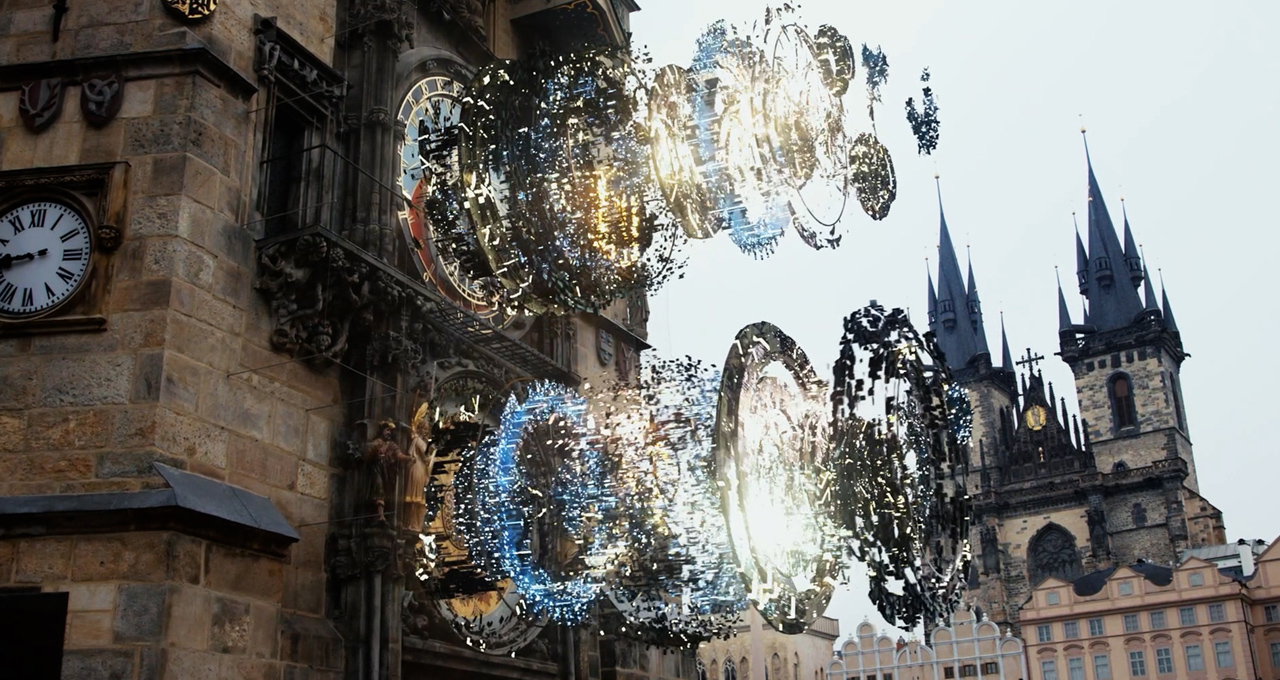Editor’s note: This post is part of our weekly In the NVIDIA Studio series, which celebrates featured artists, offers creative tips and tricks, and demonstrates how NVIDIA Studio technology accelerates creative workflows.
A triple threat steps In the NVIDIA Studio this week: a tantalizing trio of talented 3D artists who each reimagined and remastered classic European buildings with individualistic flair.
Robert Lazăr, Dawid Herda and Dalibor Cee have lived unique creative journeys — from their sources of inspiration; to the tricks they employ in their creative workflows; to the insights they’d share with up-and-coming artists.
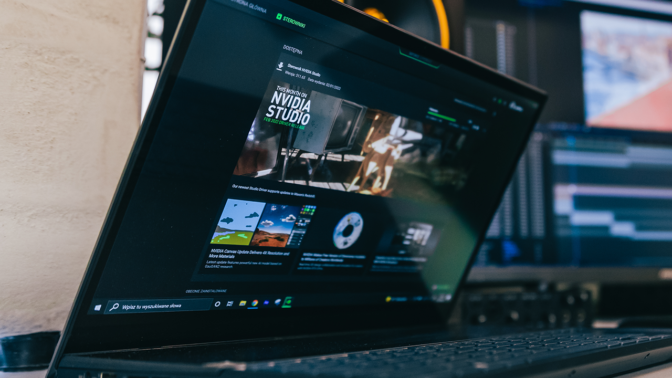
While their techniques and styles may differ, they share an NVIDIA Studio-powered workflow. GPU acceleration in creative apps gave them the freedom to fast-track their artistry. AI-powered features accelerated by NVIDIA RTX GPUs reduced repetitive, tedious work, giving back valuable time for them to tinker with and perfect their projects.
Romanian Rendering
Lazăr, who also goes by Eurosadboy, is a self-taught 3D artist with 17 years of experience, as well as an esteemed musician who embarks on a new adventure with each piece that he creates.
While exploring his hometown of Bucharest, Lazăr was delightfully overwhelmed by the Union of Romanian Architects building, with its striking fusion of nostalgia and futurism. Fueled by his passion for science fiction, he saw the opportunity to enhance this iconic building with digital art, featuring elements of the past, present and future.
Lazăr first surveyed the building on site to estimate general sizes, then created a moodboard to gather inspiration from his favorite artists.
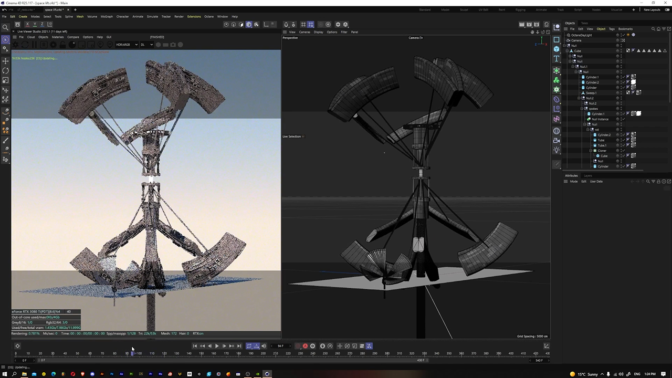
“Considering that my style trends toward hyperrealism, and given the need for ray tracing in every scene, it was clear the GPU I chose had to be RTX,” Lazăr said.
With his vision in place, Lazăr opened Cinema 4D software and built models to bring the futuristic creation to life. The NVIDIA RTX GPU-accelerated viewport enabled smooth interactivity for these complex 3D shapes while modeling.
He then generated metal, stone and glass textures within the free JSplacement Classic software, then imported them back to Cinema 4D to apply them to his models. Animated elements were added to create his “space elevator” with rotating disks and unfolding arms.
To ensure the scene was lit identically to the original footage, Lazăr used GPU-accelerated ray tracing in Otoy’s Octane to create an ambient-occlusion effect, achieving photorealistic lighting with lightning speed.
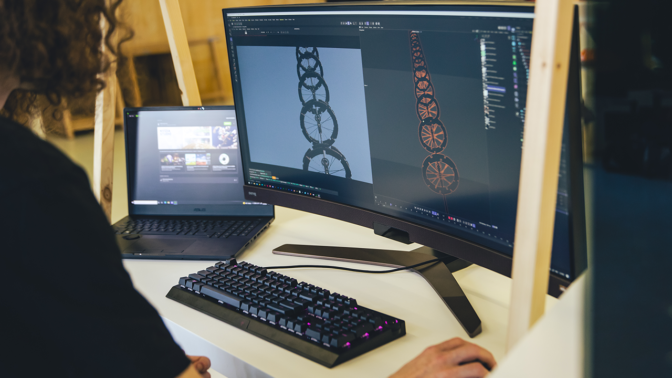
At this stage, Lazăr imported the scene into Adobe After Effects software, then added the digital scene on top of the high-resolution video footage — creating an extraordinarily realistic visual. “The footage was in 4K RAW format, so without the capabilities of the NVIDIA RTX GPU, I wouldn’t have been able to preview in real time — making me spend more time on technical parts and less on creativity,” he said.
Matching colors was critical, the artist added, and thankfully After Effects’ several GPU-accelerated features, including Brightness & Contrast, Change Color and Exposure, helped him get the job done.
Making use of his GeForce 3080 Ti GPU and ASUS ProArt NVIDIA Studio laptop, Lazăr created this work of 3D art faster and more efficiently.
Polish Pride
Dawid Herda, known widely as Graffit, has been an artist for more than a decade. He’s most inspired by his experiences hitchhiking across his home country, Poland.
Visiting Gdańsk, Herda found that the architecture of the city’s 600-year-old maritime crane sparked ideas for artistic transformation. He visualized the crane as a futuristic tower of metal and glass, drawing from the newer glass-fronted buildings that flank the old brick structure.
His workflow takes advantage of NVIDIA Omniverse, a platform for 3D design collaboration and world simulation, free for RTX GPU owners. The open-source, extensible Universal Scene Description file format gave Herda the freedom to work within several 3D apps at once, without having to repeatedly import and export between them. Plus, he shared his creation with fellow artists in real time, without his colleagues requiring advanced hardware.
“All these features make the job of complex design much more efficient, saving me a lot of time and freeing me to focus on creativity,” said Herda.
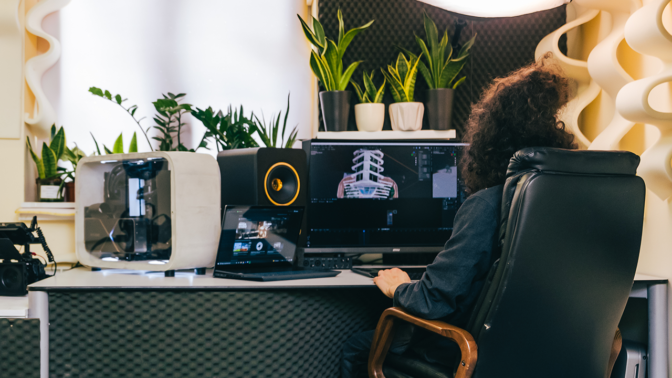
Herda accessed the Omniverse Connector for Blender to accomplish 3D motion tracking, which is the simulation of live-action camera moves and perspective inside compositing software. From 4K ProRes footage of the crane captured by drone, Herda selected his favorite shots before importing them. He traced the camera movement and mapped perspective in the scene using specific points from the shots.
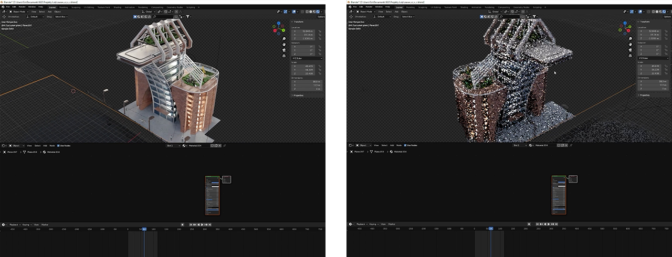
“You often have to jump between apps, but thanks to NVIDIA Studio, everything becomes faster and smoother,” Herda said.
Then, Herda added his futuristic building variant, which was created and modeled from scratch. The AI denoising feature in the viewport and RTX GPU-accelerated ray tracing gave Herda instant feedback and crisp, beautiful details.
The artist made the foundational 3D model of the crane using simple blocks that were transformed by modeling and detailing each element. He swapped textures accurately in real time as he interacted with the model, achieving the futuristic look without having to wait for iterations of the model to render.
After animating each building shape, Herda quickly exported final frame renders using RTX-accelerated OptiX ray tracing. Then, he imported the project into After Effects, where GPU-accelerated features were used in the composite stage to round out the project.
His creative setup included a home PC equipped with a GeForce RTX 3090 GPU and an ASUS ZenBook Pro Duo NVIDIA Studio laptop with a GeForce RTX 3080 Laptop GPU. This meant Herda could create his photorealistic content anywhere, anytime.
Czech Craft
Dalibor Cee turned a childhood fascination with 3D into a 20-year career. He started working with 3D architectural models before returning home to Prague to specialize in film special effects like fluid simulations, smoke and explosions.
Dalibor also enjoys projection mapping as a way to bring new light and feeling to old structures, such as the astronomical clock on the iconic Orloj building in Prague’s Old Town Square.
Fascinated by the circular elements of the clock, Dalibor reimagined them in his Czech sci-fi-inspired style by creating a lens effect and using shiny, golden elements and crystal shapes.
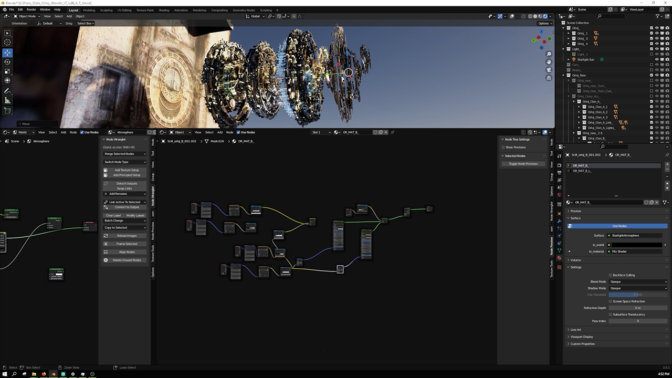
The artist started in Blender for motion tracking to align his video footage with the 3D building blocks that would make up the main animation. Dalibor then added textures generated using the JSplacement tool. He experimented with colors, materials and masks to alter the glossiness or roughness, emission and specular aspects of each element.
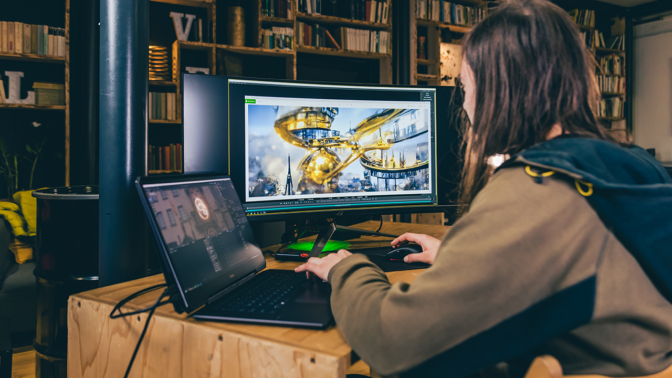
“I use apps that need NVIDIA CUDA and PhysX, and generally all software has some advantage when used with NVIDIA RTX GPUs in 3D,” Dalibor said.
The models were then linked onto curves to be animated for forward, backward and rotating movements — similar to those of an optical zoom lens, creating animation depth. Dalibor achieved this with dramatic speed by using Blender Cycles RTX-accelerated OptiX ray tracing in the viewport.
This kind of work is very time and memory intensive, Dalibor said, but his two GeForce RTX 3090 Ti GPUs allow him to complete extra-large projects without having to waste hours on rendering. Blender’s Cycles engine with RTX-accelerated OptiX ray tracing and AI denoising enabled Dalibor to render the entire project in just 20 minutes — nearly 20x faster than with the CPU alone, according to his testing.
These time savings allowed Dalibor to focus on creating and animating the piece’s hundreds of elements. He combined colors and effects to bring the model to life in exactly the way he’d envisioned.
NVIDIA Studio systems have become essential for the next generation of 3D content creators, pushing boundaries to create inspirational, thought-provoking and emotionally intensive art.
Studio Success Stories
For a deeper understanding of their workflows, see how Lazăr, Herda and Dalibor brought their creations from concept to completion in their in-depth videos.
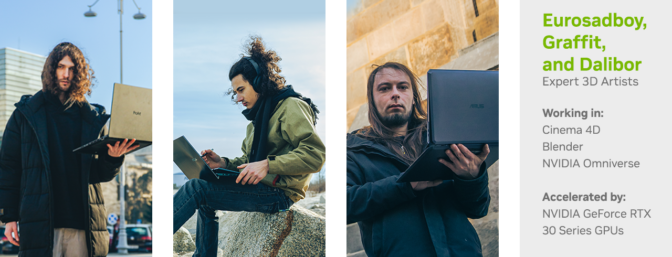
Check out Lazăr’s and Herda’s Instagram channels and Dalibor on ArtStation.
Join the #CreatorsJourneyChallenge
In the spirit of learning, the NVIDIA Studio team is posing a challenge for the community to show off personal growth. Participate in the #CreatorsJourney challenge for a chance to be showcased on NVIDIA Studio social media channels.
Entering is easy. Post an older piece of artwork alongside a more recent one to showcase your growth as an artist. Follow and tag NVIDIA Studio on Instagram, Twitter or Facebook, and use the #CreatorsJourney tag to join.
🖌️It's time to show how you've grown as an artist (just like @lowpolycurls)!
Join our #CreatorJourney challenge by sharing something old you created next to something new you've made for a chance to be featured on our channels.🖼️🖼️
Tag #CreatorJourney so we can see your post.🙌 pic.twitter.com/PmkgOvhcBW
— NVIDIA Studio (@NVIDIAStudio) August 15, 2022
Learn something new today: Access tutorials on the Studio YouTube channel and get creativity-inspiring updates directly to your inbox by subscribing to the NVIDIA Studio newsletter.
